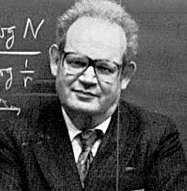All about fractals in negashte: What are Fractals?
They're everywhere, those bright, weird, beautiful shapes called fractals. But what are they, really?
Fractals are geometric figures, just like rectangles, circles and squares, but fractals have special properties that those figures do not have.
There's lots of information on the Web about fractals, but most of it is either just pretty pictures or very high-level mathematics. So this fractals site is for kids, to help them understand what the weird pictures are all about - that it's math - and that it's fun!

Benoit Mandelbrot was largely responsible for the present interest in Fractal Geometry. He showed how Fractals can occur in many different places in both Mathematics and elsewhere in Nature. What's so hot about fractals, anyway?
They're New!
Most math you study in school is old knowledge. For example, the geometry you study about circles, squares, and triangles was organized around 300 B.C. by a man named Euclid. Fractal geometry, however, is much newer. Research on fractals is being carried out right now by mathematicians. Have you ever thought about a career as a mathematician?
You can understand them.
Much research in mathematics is currently being done all over the world. Although we need to study and learn more before we can understand most modern mathematics, there's a lot about fractals that we can understand.
Fractals often look like objects in nature.
Many objects in nature aren't formed of squares or triangles, but of more complicated geometric figures. Many natural objects - ferns, coastlines, etc. - are shaped like fractals. These pictures are examples of fractals in nature.
Imagine that the picture at the top of this page is a picture of the coastline of Africa.You measure it with mile-long rulers and get a certain measurement. What if on the next day you measure it with foot-long rulers? Which measurement would give you a larger measurement. Since the coastline is jagged, you could get into the nooks and crannies better with the foot-long ruler, so it would yield a greater measurement. Now what if you measured it with an inch-long ruler? You could really get into the teeniest and tiniest of crannies there. So the measurement would be even bigger, that is if the coastline is jagged smaller than an inch. What if it were jagged at every point on the coastline? You could measure it with shorter and shorter rulers, and the measurement would get longer and longer. You could even measure it with infinitesimally short rulers, and the coastline would be infinitely long. That's fractal.
Other website about fractals Fractals:knowing how the fractal is made Frank ROUSSEL:Picture,Animation and movei from Fractals This is a collection of fractals and fractal related material for free distribution |



